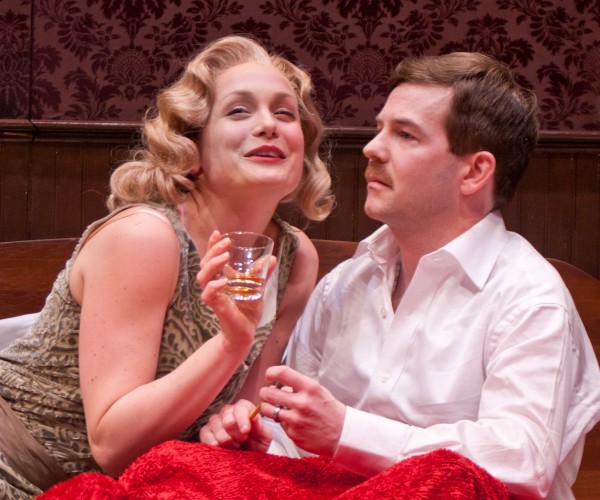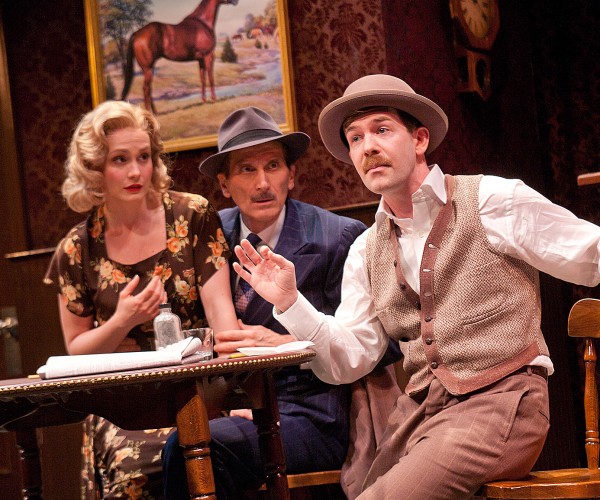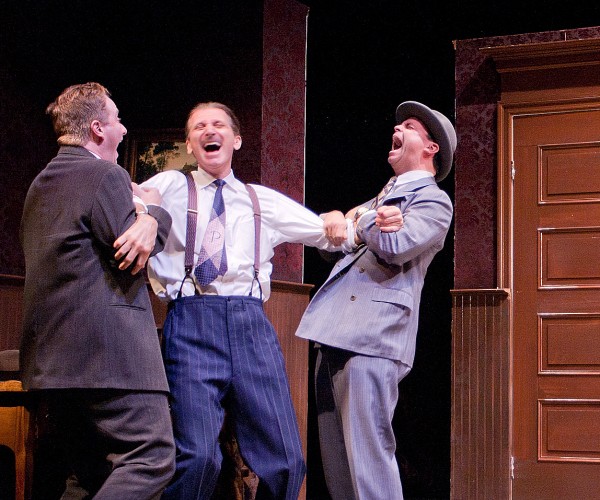Dramaturgy
The Great Depression of the 1930s reshaped not only the American economic system, but fundamentally and permanently altered the American cultural milieu. When George Abbott and John Cecil Holm’s rollicking screwball comedy Three Men on a Horse premiered on Broadway in January of 1935 at The Playhouse Theater, this strange new cultural landscape served as ideal fodder for Depression-weary theatergoers. With unemployment over 20% when Franklin Delano Roosevelt entered office in 1933, his administration, and indeed the nation as a whole, became suddenly concerned with leisure time for the masses of unemployed. In FDR’s New Deal, people were not only put on the job in large scale public works, but for the only period of time in United States history, performing and visual artists and writers were entirely funded by the federal government to create works for the public good. Furthermore, as the nation ended prohibition of alcohol and many states ended prohibitions on gambling and other “morally suspect” activities in order to raise tax revenue, the encouragement of moral and healthy choices in the use of leisure time became a national concern.
Horse Racing, the second most popular sport of the 1930’s after baseball, first came to America alongside British colonialism. The English imported horses and their centuries old “Sport of Kings,” building the first American racetrack on Long Island in 1665, with many other colonialists soon following suit. By the late 19th Century, there were over 314 racetracks in the United States, with many tracks being largely dominated by organized crime. During the 19th Century, gambling at most horse races was “against the house,” with the odds often stacked (and sometimes fixed) against the players. Fraud was widespread, with horse owners often simultaneously acting as bookmakers and utilizing “ringers” as fraudulent substitutes for their horses. Although organizations such as the American Jockey Club attempted to clean up horse racing during this time, the criminal element remained undeterred, which was part of what lead to the harsh backlash against the sport at the turn of the century. In fact, at the beginning of the 20th Century a moral zeal swept through the country and almost every state made all forms of gambling illegal, including horse racing. The number of operating horse tracks decreased to just 25 by 1908, as popular opinion turned against the sport.
Following the 1929 stock market crash, however, many states began to reconsider their strict laws regarding gambling, with many seeing horse racing in particular as a means of increasing tax revenues. Furthermore, the popularization of a betting structure known as parimutuel betting lent an air of legitimization to the sport. In parimutuel betting, all of the bet money is pooled, and after a fixed percentage is removed for track expenses and taxes, paid out to the winners based on calculated odds. For example, if a horse is projected to win by odds of 2-1, if the better puts $1 on the horse and it wins, the better will get $2. Betters may wager on whether a horse will win (finish first), place (finish first or second) or show (finish first, second or third). The mechanization of odds-making in the early 1930s created what many people felt was a fairer and more objective system. In 1933, the American Totalisator Company (AmTote) installed the world’s first electro-mechanical betting system that displayed odds and payouts on illuminated boards. Although betting still carried an air of the morally suspect by the time Three Men on a Horse hit the boards, fraud was nearly non-existent and betting was conducted within legal parameters.
For Erwin, the hero of Three Men, what is so charming and unusual about his initial interest in horse racing is that he prefers it as a hobby with no monetary investment. It is telling that although Erwin delights in picking horses, at the beginning of the play he just can’t imagine that it would be moral (or nearly as much fun) to place real money on a race. In fact, Erwin’s insistence on having a hobby outside of the capitalist framework is very much in line with the sentiment of the day. In the 1930s hobbies came to be viewed as “a job that you couldn’t lose,” a place to invest personal ambition and interest in a disheartening economy with little job security. A hobbyist, after all, could quit anytime but could never be laid off. Furthermore, from a social standpoint, hobbies could be viewed as a wholesome, moral and didactic use of leisure time for the un- and under- employed, whose insistent presence loitering on the streets and in bars on weekday afternoons was increasingly viewed as a social ill. Thus, in both the rhetoric of Roosevelt’s New Deal agencies and in the popular media of the day, hobbies became an increasingly encouraged use of leisure time.
Holm and Abbott gleefully reverse conventional assumptions about gambling in their play, offering it as a wholesome hobby, or even a means to middle class lifestyle, mining the topsy turvy 1930s economy and culture for much needed laughs. Three Men on a Horse, one of the great American comedies of the decade, has been curiously neglected from the American canon of theatre. Although sporadic attempts to revive the play have emerged, it remains largely unknown. Yet, for a New York audience’s Recession-wearied spirits in 2011, Three Men offers some comfort in the form of some really good laughs. After having spent the last few years watching Lehman Brothers collapse, the Bernie Madoff debacle and Wall Street bonuses increase, TACT is pleased to offer New York this riotous take on a world gone mad for big risks and bigger dividends.






